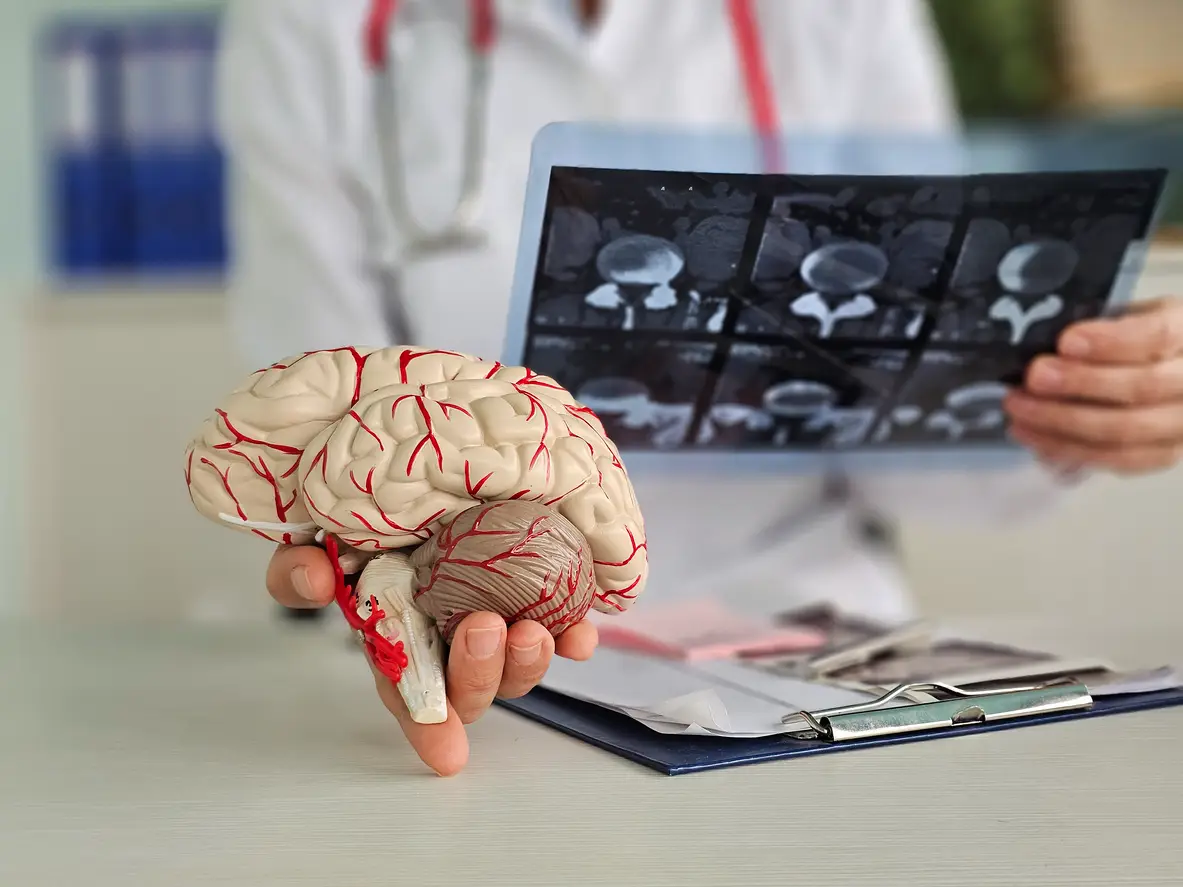Introduction: The Journey After Relief Begins
Headache surgery, particularly peripheral nerve decompression, offers something rare to patients who have long suffered with chronic, debilitating pain: a real chance at resolution. For many, the procedure marks the end of years of frustration, misdiagnosis, and failed treatments. But while the decision to undergo surgery is often filled with hope, it is followed by a different kind of uncertainty: what comes next?
Recovery from headache surgery is not only physical—it is psychological, emotional, and deeply personal. It unfolds over weeks and months and varies from person to person. Some patients experience near-immediate relief, while others improve gradually. Some discover that the absence of pain is accompanied by a period of disorientation, even disbelief. Others find that recovery is more layered, more nonlinear, than they expected.

Early Recovery: The First Week
Most headache surgeries are performed on an outpatient basis, meaning patients go home the same day. The procedure involves small incisions made in the upper eyelid or the scalp or at the base of the skull to access the peripheral sensory nerves responsible for the patient’s pain. The compressed nerve is released from surrounding tissue—muscles, fascia, or blood vessels—and in some cases, small nerves are removed or redirected. Categorically, headache surgery is not brain surgery and never gets even near the central nervous system.
Postoperatively, patients may experience soreness at the incision site, a sensation of tightness, or dull aching in the area that was decompressed. This is normal and expected. Some describe the discomfort as similar to that after dental surgery or wisdom tooth removal—more of a nuisance than actual pain. In most cases, over-the-counter medications such as acetaminophen or ibuprofen are sufficient to control symptoms.
Swelling and bruising are common in the first few days, especially if multiple nerves were addressed. Applying cold compresses, keeping the head elevated, and following the surgeon’s wound care instructions help reduce these symptoms.
Importantly, some patients report early signs of relief within hours or days. Some report immediate headache relief in the recovery room. They may describe a sense of lightness, a disappearance of pressure, or the lifting of a long-standing fog. While not universal, these early improvements are encouraging and often indicative of a successful decompression.
Weeks 1–4: The Body Adjusts
During the first month, most patients begin to transition from postoperative soreness to real improvement. Incisions heal. Swelling resolves. The surgical sites begin to desensitize. But perhaps the most significant change during this period is the patient’s own recalibration.
After years of persistent pain, the nervous system adapts in ways that become hardwired. This process—known as central sensitization—means that pain can persist even after the original source has been removed. Fortunately, in patients with true nerve compression, removing that source allows the nervous system to begin unwinding.
But this takes time. Some patients feel better right away. Others begin to notice improvement only after several weeks. It’s not uncommon for pain to fluctuate during this phase—better on some days, more noticeable on others. Numbness in the area of decompressed nerves is common, particularly when nerve branches were resected. For many, this numbness fades over time. For others, a small patch of scalp may remain insensate, but most often without discomfort.
Patience is critical. The healing process is not linear. It is more like peeling back layers: physical relief gives way to emotional processing, which gives way to cognitive clarity. As pain diminishes, patients often begin to recognize how much energy they had been devoting to managing symptoms—and how liberating it is to let go of that burden.
Months 2–3: Rebuilding Confidence
By the end of the second or third month, most patients see significant improvement. Some may be pain-free. Others may still experience occasional flares, but these are usually less intense, shorter in duration, and more manageable.
This phase of recovery is about rebuilding confidence. It’s the stage where people begin to test their limits—going back to work, traveling, exercising, or doing the things they used to avoid for fear of triggering a headache. Each successful experience adds to a growing sense of freedom.
At the same time, some patients struggle with a kind of emotional lag. They may find it difficult to trust that the pain won’t return. They may feel hyper-aware of every small sensation in their head or neck. This is normal. Chronic pain conditions teach the body to be on alert. It takes time to unlearn that vigilance.
For some, working with a therapist or counselor during this time is helpful. The emotional residue of long-term pain is real, and recovery is as much about reestablishing a sense of safety as it is about resolving symptoms.
Beyond Three Months: Redefining Normal
Three to six months after surgery, most patients have reached their new baseline. For some, that baseline is complete resolution of symptoms. For others, it is a dramatic reduction in frequency and intensity of headache. Even if some symptoms persist, the majority of patients report a significant improvement in quality of life: fewer medications, less fear, better sleep, and the return of activities that had previously been off-limits. Some patients who still have occasional pain report that medications that never worked before now provide relief- even Tylenol can often alleviate a headache.
At this stage, what matters most is redefining what “normal” means. Chronic headache has a way of distorting expectations. Many patients assume they will always live with a degree of pain, or that every headache is a sign of failure. Recovery means learning to trust the body again. It means recognizing that some days will still be imperfect—but that imperfection does not equal relapse.
In practices that specialize in headache surgery, long-term follow-up shows high patient satisfaction rates. The procedure is not a cure-all for every kind of head pain, but in well-selected patients, it is among the most effective interventions available. For those who have suffered for years, even a partial reduction in symptoms can be life-changing.
Managing Expectations and Setbacks
Not all recoveries are smooth. Some patients experience delayed relief. Others may have residual discomfort, especially if multiple nerves were involved or if secondary muscular tension persists. In rare cases, scar tissue or residual compression may require revision surgery. But these situations are uncommon.
There may also be the presence of overlapping conditions. Some patients have true nerve compression alongside other pain generators—cervical spine issues, jaw tension, or even migraine. In these cases, surgery may resolve one component but not all. Still, the reduction in pain burden can be substantial.
Managing expectations is part of good surgical care. Patients should understand that surgery is not about perfection. It’s about function, freedom, and regaining control. And in most cases, it succeeds on those terms. But the fact that over 90% of patients report a significant improvement and would have the surgery again and recommend it to others remains monumental.
The Emotional Side of Healing
For many patients, the emotional aftermath of surgery is more profound than they anticipated. Chronic pain shapes identity. It isolates, limits, and shrinks one’s world. When that pain begins to recede, it creates space—space for joy, for presence, for ambition. But it also surfaces grief. Grief for the years lost, the events missed, the relationships strained by the burden of invisible suffering.
This too is part of recovery. Some patients feel an urgency to make up for lost time. Others feel overwhelmed by the possibilities. Still others feel uncertain—as though they’ve been living in survival mode for so long, they don’t know what thriving looks like.
Support during this time matters. Loved ones may need guidance on how to respond to the newly pain-free version of someone they’ve grown used to seeing in distress. Patients may need to learn how to advocate for themselves in a new way—not to ask for relief, but to protect their time, their energy, and their continued recovery.

Final Thoughts: The Quiet Triumph of Recovery
Recovery from headache surgery is not just about healing incisions. It is about reclaiming a life that was once ruled by unpredictability and pain. It is about discovering what it means to live without constant fear of a flare. It is about possibility.
There is something quiet but profound about waking up one day and realizing that your head does not hurt. That you haven’t reached for medication in weeks. That you are thinking about dinner plans, not symptom triggers.
This is what success looks like. Not always dramatic. Not always linear. But deeply meaningful.
For the right patient, nerve decompression surgery doesn’t just end a chapter. It begins a new one. And the story that follows is not just about being pain-free. It’s about learning what it means to live again.
While no single treatment fits every patient, headache surgery has emerged as a promising headache cure for those with confirmed nerve compression. For many, it doesn’t just reduce symptoms—it transforms daily life. Exploring this option with a specialist can help determine if it’s the right next step on your path to lasting relief.

